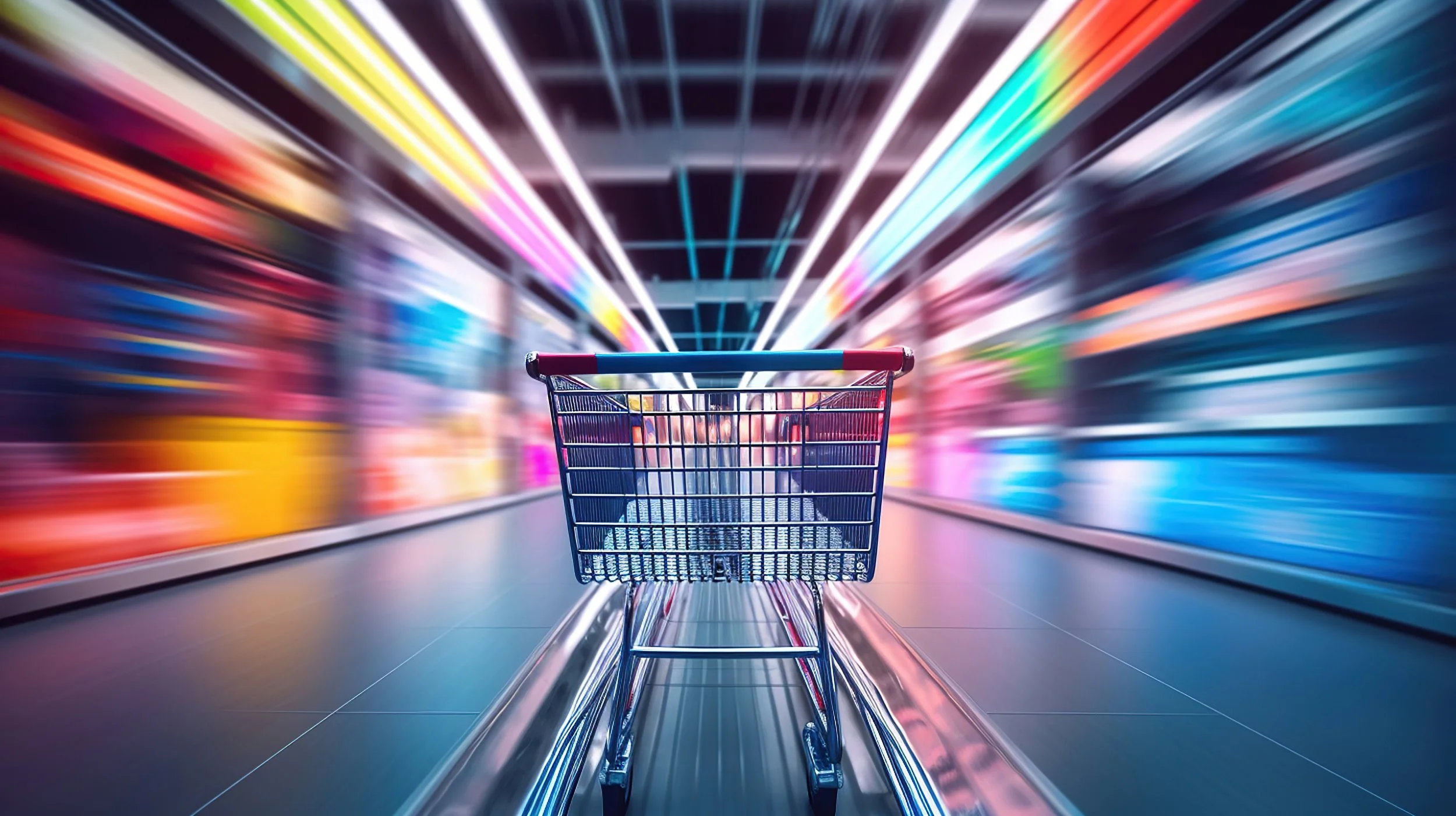Can you keep up with stakeholder demand for innovation projects? And is your retail business scaling up IT spend to ensure the business is stronger, smarter and ready for the future?
Last month we asked if your retail business is spending enough on IT. We shared the critical indicators that can mean you’re underspending, tips on what you should spend and when it’s the right time to ramp up.
But of course, any increase in IT spend must be paid from somewhere. In this blog, we look at what gets in the way of scaling up investments and how to make the case for increasing spend.
While retail has traditionally lagged in IT spend as a share of revenue compared to other sectors, retailers that are aggressive on growth realise they need to harness new technologies for a customer-first experience.
The shift towards technology and innovation is critical for survival, especially as the industry becomes increasingly competitive, and the gap between winners and losers widens.
Today technology is not just for “keeping the lights on”, but a crucial driver for efficiency, customer satisfaction and sustainable growth.
So what’s stopping retailers from upping their spend?
There are five challenges that prevent retailers from making the decision to adopt new technologies:
Challenge 1: Money’s tight and many priorities to juggle
Retailers often face tight budget limitations and the need to prioritise expenditures that seem crucial for immediate survival, such as inventory, rent and staffing. Plus, there's often a real temptation to take a short-term focus, with execs opting to chase quick wins instead of playing the long game with IT investments. It’s all about juggling priorities, and sometimes tech just doesn’t make it to the top of the list.
Challenge 2: Understanding the big picture and shaking off old habits
A lack of understanding or awareness about the transformative potential of IT investments is another major hurdle. Sometimes the obstacle is an organisational culture resistant to change, where IT is viewed as a mere cost centre rather than a growth enabler. Traditional mindsets and the "if it ain't broke, don’t fix it" attitude hinder the adoption of new technologies.
Challenge 3: Playing it safe and doubting the hype
Retailer hesitation towards IT spending is frequently due to risk aversion - fear of not achieving the anticipated return on investment, especially if they’ve been burned by failed tech projects in the past. This skepticism is fuelled by rapid technological changes and a market flooded with new solutions, making it difficult to tell whether the investments will achieve the touted benefits.
Challenge 4: Old systems, big headaches
The complexity of upgrading IT infrastructure, especially for retailers with established legacy systems, presents significant operational challenges. Concerns about disrupting current operations, the resources required for successful implementation, and the task of staff training deter retailers from undertaking comprehensive IT upgrades. Compatibility issues with existing and future systems can make the transition to a modern IT infrastructure seem a daunting task.
Challenge 5: Keeping up with the competition
Highly competitive market conditions force retailers to focus on immediate competitive tactics, such as price wars, often at the expense of strategic IT investments. The pressure to maintain low prices and manage operational costs can leave little resources for innovation IT spending. Plus, the emergence of new consumer needs and technology changes can be overwhelming and create a sense of inability to keep up, leading to decision paralysis.
So how do you navigate the budget blocks to start over?
Making a business case for increasing IT spend involves a mix of strategy, foresight and clear communication.
Here's how to justify the investment:
Show real ROI: Demonstrate how the investment will help achieve your strategic business goals by providing a solution to challenges you face or taking advantage of new opportunities. Illustrate the benefits it offers with concrete data and case studies. Show how a modern tech infrastructure increases revenue, reduce costs over time and enhances operational effectiveness.
Check out the competition: Highlighting what others in retail (and other sectors) are doing is a powerful motivator, especially if they're gaining a competitive edge through technology. Show how changing consumer preferences and rising expectations for speed and convenience are creating new growth opportunities, with retailers that deliver a personalised omnichannel CX best positioned for long-term growth and loyalty.
Include a roadmap, and a plan for dodging trouble: Present a clear, phased plan for how the IT investment will be rolled out. This should include timelines, milestones, budget requirements and expected outcomes. Define the risks associated with inaction, including cybersecurity vulnerabilities, operational inefficiencies, and the threat of falling behind in a rapidly evolving retail landscape. Show you know how to select the right technology that delivers the expected returns for your retail business, and that you have a plan for what to do if things go wrong.
Highlight operational savings: Detail how IT investments will streamline day-to-day operations, improve inventory management, point of sale transactions and overall productivity, while also ensuring compliance with increasing data security and privacy standards. Demonstrate the operational necessity and legal imperatives for the IT upgrade.
Showcase scalability and sustainability: Explain how investing in IT is not just a short-term expense but a step towards making the business scalable and future-proof. Modern technology means you can easily adapt and grow by staying relevant and adaptable with technological advancements.
Get everyone onboard: Be ready to address any concerns or objections. This involves understanding the perspectives of different stakeholders and directly addressing their individual concerns, using data, visual aids and storytelling to make your case compelling and relatable.
Present data-driven insights: Show how a better IT infrastructure can lead to more effective data collection and analysis, which can shift your business strategies from guesswork to smarter, data-driven decisions. You’ll have insights that allow you to predict trends, deeply understand your customers' behaviours and optimise your operations for efficiency and satisfaction.
Boost working capital and get smart with stock: Demonstrate how a modern tech infrastructure improves visibility into stock levels and sales patterns, allowing for better demand forecasting and inventory allocation, and minimising stockouts and markdowns. This optimisation leads to a reduction in tied-up capital, freeing resources for other strategic investments.
By focusing on these eight strategies, you can craft a compelling case for increasing investments in IT, showing it’s a crucial driver for efficiency, customer satisfaction and sustainable growth.
If you want to ensure your retail business accelerates innovation while lowering costs and risk, get in touch. We’d love to help you navigate the budget blocks and craft a compelling business case.

























